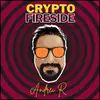🔥Crypto Fireside #4. Abbas Husain, NFTs, and Very Serious Art.
🔥 Hello! Who are you and what do you do?
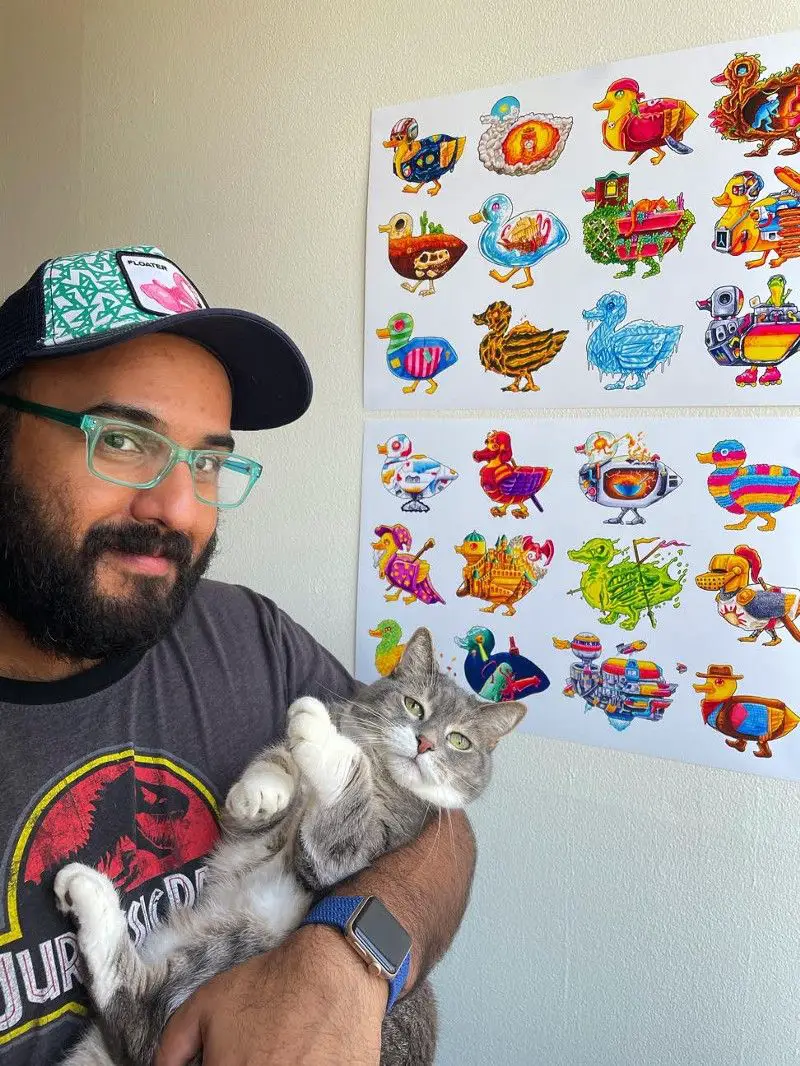
🔥 Hello! Who are you and what do you do?
AH: Hi, my name is Abbas. You can find me all over the internet as @bagmanstudios. I am an illustrator out of Michigan. I use the term illustrator instead of artist usually because ‘artist’ has such a serious tone, and I am not a very serious person. Although I do take making my non-serious illustrations very seriously. I have a website, bagmanstudios.com, and I sell prints and stickers and other nonsense out there. Most days I am humbled that people would even look at my stuff, so managing to make a living selling it still feels like a passing dream to me. I’m very lucky to be in a position where my career is pursuing my passion projects. This is what eventually led me to this project, The BLORP. Baseball League of outer rim planets.
🔥 What’s your backstory how did you get into the art scene?
AH: I’ve been drawing all my life and went to school to pursue it. Although to any prospective artists out there, I would NOT endorse going to art school. I spent a lot of years in a couple of different careers before I started taking art seriously in a professional capacity. In 2016, while living at my Mom’s house while helping her recover from surgery, I decided to put myself out there and try and sell my art online. I had some good luck early and I’ve been working ever since. I am too governed by self-doubt to effectively brag about myself, but I have sent thousands of pieces in that time. Recently, someone tagged me in an Instagram post of one of my stickers in Antarctica, which was really cool. No pun intended.
🔥 You had some good luck early on?
AH: So I was back home, trying to figure out what my next move would be. My previous jobs of about 4 years each were managing production for a t-shirt printing company, and then managing a really crazy college bar. I was doing some freelance graphic design, which was both creatively and financially unfulfilling. And I knew I wanted to try and do something else.
At first, I tried what I was lamenting earlier in this interview. My ideas were to make an enamel pin website because I thought ‘this is what people are buying'. And I did design and order a couple. But in that same time frame, I also came across a community screen print shop in Detroit, Ocelot Print Shop. It had been a small dream of mine to screenprint paper prints, but I never had access to the equipment. So I signed up and went to Detroit and found this really wonderful shop run by very welcoming art hippies.
For the mandatory orientation class, I wanted to print my own design. So, I messed around and made this screenprint, ‘sad sharks club’, and went down there and ran it. At this point, I just wanted to do something for fun- I wasn’t thinking about sales. Once I had these prints In hand, I posted them to the r/art subreddit. I honestly wasn’t expecting much, but I got a huge reaction and a big interest in the prints. And that was the first time I started to believe that people would want my art- and not just products I designed and tricked them into buying.
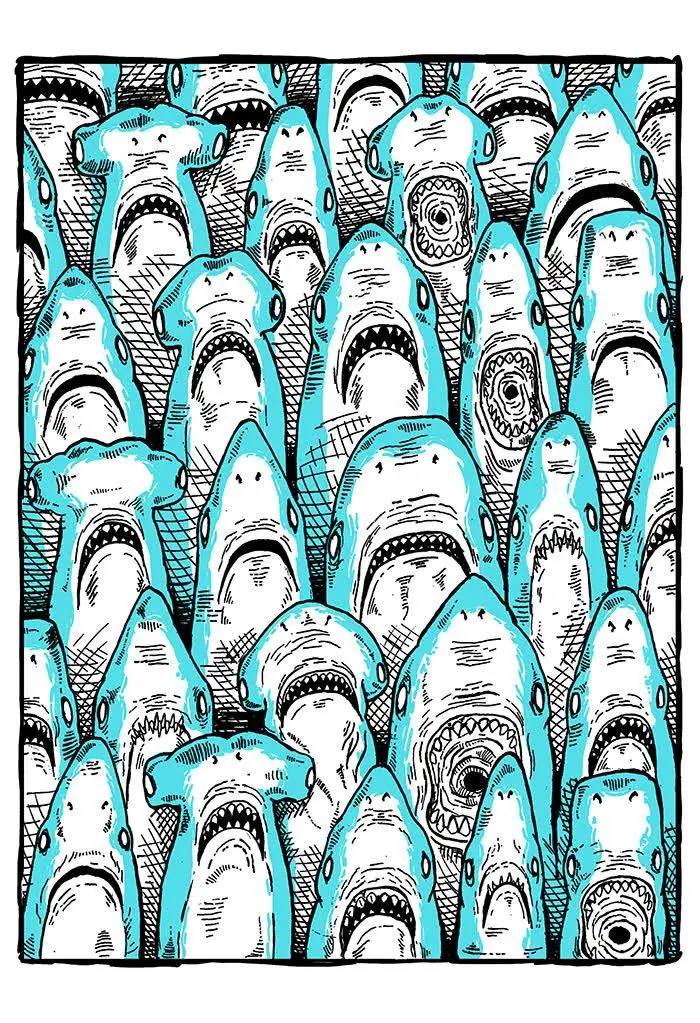
🔥 Take us through your process of starting The BLORP.
AH: Once NFTs came onto my radar, I desperately tried getting into some of the bigger private marketplaces out there, but with no luck. Even with a good 120k Instagram followers, I couldn’t get any traction. So instead, I hopped on to Opensea and decided to try and sell them myself. I tokenized various pieces of mine and had some success moving them, but to me, they were always physical pieces first and digital second. I wanted to have a project that NFTs would fit more appropriately. I had wanted to do a series of baseball cards for the longest time, but producing cards and packaging just wasn’t a realistic option. I experimented with custom marker-drawn baseball players on a few blank cards. It was fun, but I only did 4 of them. With the advent of NFTs, suddenly there was a viable option to scratch this particular creative itch.
🔥 How did you launch The BLORP?
AH: This is how the BLORP came to be. I messed around with various names until I found something fun that captured the light-hearted nature of the project. I commissioned a friend who is a talented graphic designer (lavin-designs.com) to put together a logo for me and grabbed all the social media handles I needed. And that was all the work I did ahead of time. The BLORP features cards that are kind of improvisational in nature. I sit down and sketch out a card and come up with a backstory on the spot. It’s an exercise of creativity, illustration, and world-building — and it is very, very fun for me to do.
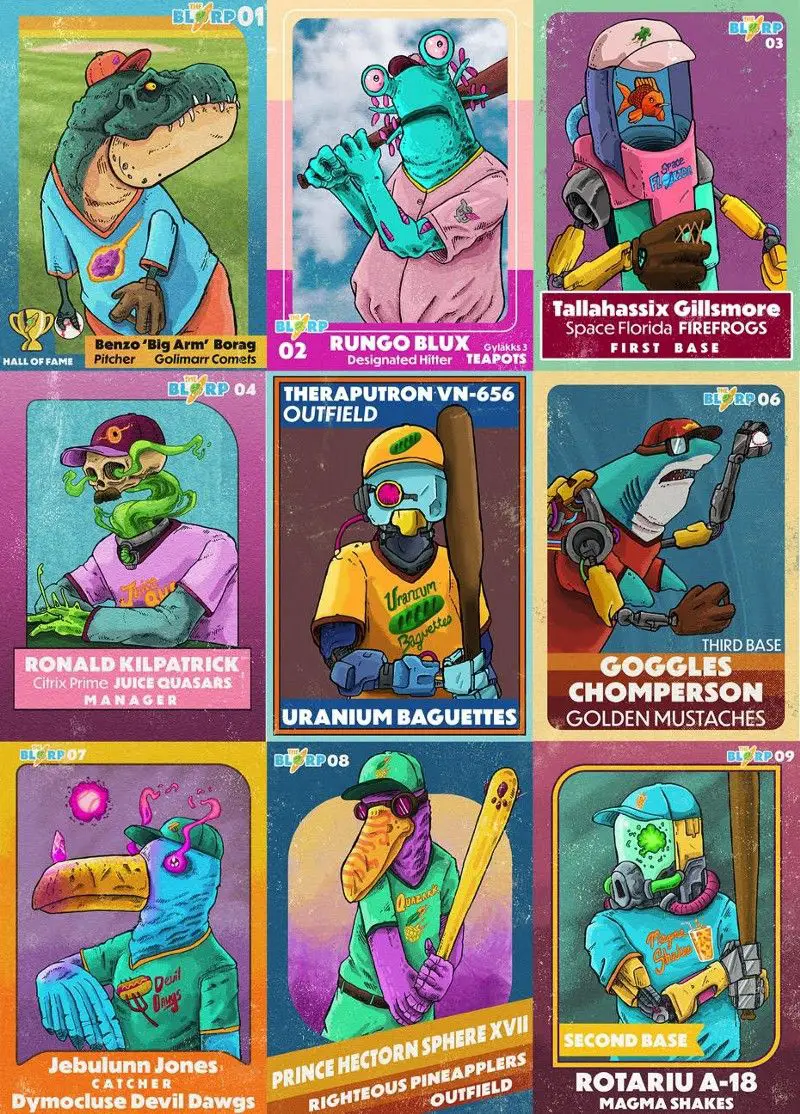
🔥 Since launching what has worked to attract and retain customers?
AH: So far the cards have moved pretty well. When I first started exploring the crypto art space, I was shocked at how saturated it was with just really bad stuff. So many people seem to try to catch the wave and come up with the next ‘thing’. I have seen so many iterations of punks and pixel things with such minimal effort. Reading through the bios of these collections and it’s clear what they are trying to sell is perceived exclusivity. And I think people can see through that. I approached The BLORP differently as an art project before anything else. It is a project I wanted to embark on before I ever knew what fungible meant. I received a great comment on Reddit that The BLORP has been a ‘refreshing break to all the noise in the space,’ and that really resonated with me.
The other aspect of The BLORP that I hope is striking a chord with people is the quality and effort of the illustrations. Part of this project’s appeal to me was creating goofy and stupid characters and backstories and then creating something visually strong with them. I wanted to take my non-serious ideas and illustrate them seriously. The idea of taking something incredibly stupid, like a cybernetic fish from a colony called Space Florida, and legitimizing it with the quality of the artwork that it’s paired with is a microcosm of what I do for a living.
🔥 What does your day-to-day look like coming up with these things?
AH: What I will do is draw out a character with a pen on paper. I just kind of mess around and draw whatever pops into my head. Every other step in the process is digital, but my favorite thing to do is draw on paper with a pen. I’ll scan the drawing and load it into my iPad and build a frame and color it digitally. Then I’ll come up with a really random team name and illustrate a logo onto the hat or jersey. I try to keep these fun and random, like ‘the uranium baguettes’. After the illustration is done, I’ll type up a quick, hopefully, entertaining backstory. I keep these light-hearted and silly to match the illustrations.
🔥 How do you market your NFTs? How do you stand out?
AH: That has been a little bit difficult. I used my Instagram platform to help. But I also post to Reddit. And the OpenSea team retweeted my project which helped me move a bunch of them. And I am hoping this interview does the same, so no pressure on you! I am not too worried about it though. I think once there is a collection of 100 really weird and hopefully wonderful cards, they will sell themselves. It’s worked for me thus far.
🔥 How are you doing today and what does the future look like?
AH: I’m doing great. I have all kinds of projects I am working on at the same time, though none of the others are NFTs. This first series goes up to 100 cards, so I have a lot of drawing ahead of me. I don’t know if I will come out with another series afterward. Again, this is an art project first. I’ve sold a lot of them so far, but that isn’t really my primary concern. For the last few years of my life I’ve lived with the philosophy that if you make good enough art, the sales will take care of themselves- and it has worked out in my favor so far. One thing I have noticed browsing the unending tsunami of NFTs on the market is that so many people are approaching this as a hustle. Anytime I have used NFT-based hashtags or post on Reddit, I get inundated with spam messages. And it seems for most of these people, art is the least important factor. I feel the opposite. I’m just trying to draw dinosaur pitchers and stuff, and if people decide it is worth their hard-earned money, that’s very cool with me.
🔥 You talk about doing great today, care to share anything financial?
AH: I tend to keep income numbers close to my chest, but I am completely supporting myself with my illustrations now. I have sent out more than 10,000 prints I think… and I don’t even know how many stickers. It made surviving the pandemic a lot easier. I shudder to think what would be if I was in either of my previous careers. I should state that I do work a lot. I try to draw at least 4–6 hours a day, but a lot of times it is 10–12. I am also hand-pulling screenprints myself. But it is a labor of love. And I don’t have to deal with any workplace politics, besides my cat.
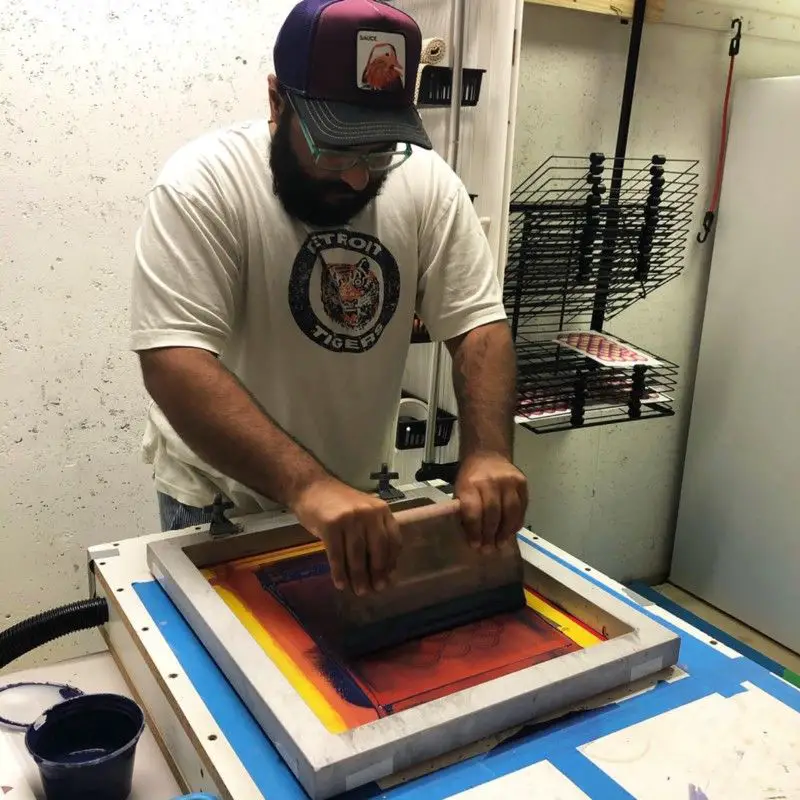
🔥 Through starting The BLORP or your art in general, have you learned anything particularly helpful or advantageous?
AH: Probably the most important lesson I’ve learned is that there aren’t any shortcuts for the art. You just have to draw. I think people can tell when something is half-assed. I have also found, at least for myself, that If I start a project thinking about how it will sell it starts to become compromised in quality and unenjoyable to make. In my opinion, that’s what you’re seeing a lot of right now with the NFT space.
The other big lesson- which I know but can never apply to myself- is not to measure yourself with likes and sales.
And lastly, the big challenge holding this project back is gas fees. I had originally designed these cards to come in quantities of 5–10 at a low rate, .01 eth. A friend who recently bought one informed me the gas fee was $70! On a $40 card. So going forward, cards 7–100 will be single editions at a higher rate- to provide better value per card.
🔥 What have been the most influential or inspirational books, podcasts, people, or other resources?
AH: I have a lot of wonderful artists who have inspired me, but I have a specific memory of when I first began to dream of being a professional artist. It must have been 10–12 years ago, but in a museum gift shop, I came across and bought a little book called ‘Awful Homesick’ by one of my new favorite artists, Alex Pardee. I was used to seeing stodgy, old work that I drew no connection to in art books. Seeing vibrant, crazy monsters in an actual book sold in a museum store — legitimized the idea that someone could make this kind of low-brow art and people would take it seriously. Back then it did feel like a very far-fetched dream.
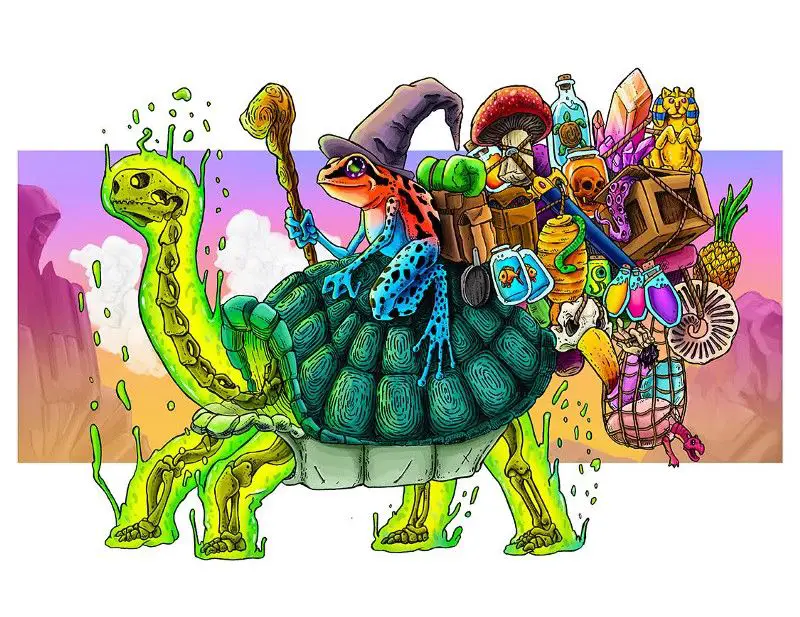
🔥 Do you have any advice for other creators, entrepreneurs or, people starting out?
AH: I can’t speak to crypto people with advice, but for artists out there, just draw. There is no shortcut around practice. If you can draw even 30 minutes every day, I promise you will see improvement very quickly.
🔥 Where do you see the Crypto and NFT space going in the next 5 to 10 years?
AH: I do think the crypto bubble will burst a bit. And I think you’ll see a dissipation of all the really low-quality NFTs out there. But I think when the crappy stuff fades away into the periphery, things that have quality will retain and grow in value. I am certainly hoping The BLORP will be among them, but I have no control over that. The only thing I care about is making a collection of illustrations I’m happy with. The rest will sort itself out.
🔥 Where can we go to learn more?
AH: www.bagmanstudios.com & @bagmanstudios
🔥 Thank you, Abbas!
Want to know how you can support Crypto Fireside?
Sign up below. It's free and easy 🔥.

